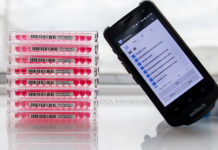 Biobanks have become an essential tool in the fight to improve healthcare outcomes via basic and clinical research. They can be classified into two categories, diseased-oriented and population-based biobanks, with slightly different end-goals. However, both types help speed up health research in their endeavor to find treatments for diseases, including cancer, diabetes, and heart disease. Their impact on dissecting the cause of a disease cannot be understated.
Biobanks have become an essential tool in the fight to improve healthcare outcomes via basic and clinical research. They can be classified into two categories, diseased-oriented and population-based biobanks, with slightly different end-goals. However, both types help speed up health research in their endeavor to find treatments for diseases, including cancer, diabetes, and heart disease. Their impact on dissecting the cause of a disease cannot be understated.
Biobanks’ role in advancing health care research
Most biobanks are longitudinal, population-based, that collect biobanking blood samples and DNA, along with lifestyle, family history, and environmental exposure from a general population of overall healthy donors1. The biobank will then follow these donors over the course of ten to thirty years, collecting samples and data at regular intervals. This is also the case with the UK Biobank, which is currently following a half-million Britons aged between 40 and 69 over the next thirty years. They will be comparing the individuals that remain healthy with those that develop an illness in the hopes of ascertaining the causes of disease progression. This should help determine the extent to which specific diseases are caused by genetic vs. environmental triggers. The ultimate goal of population-based biobanks is to document biomarkers, environmental risk factors, and genetic mutations that can be used to predict disease onset and lead to the development of preventative measures to combat disease before it can fully develop.
Conversely, disease-based biobanks focus on discovering biomarkers of a specific disease, such as cancer biobanks and biobanking during the COVID-19 pandemic. They will primarily collect samples, such as tissue biopsies, blood, and other body fluids from sick patients, to better predict progression, mortality, and response to treatment1. Biobanking and biopreservation provide an infrastructure for collecting and specimen storage for various diseases associated with relevant clinical data. This can lead to the identification of new signaling pathways and biomarkers, resulting in new targeted therapies that are key to the development of personalized medicine. These two types of biobanks can generate complementary data, leading to more robust and predictive findings, further pushing the healthcare field forward.
Overall, biomedical health research is greatly dependent on high-quality specimens1. On the other hand, low-quality specimens can lead to inaccurate conclusions and cause entire studies to be redone, costing time and money. In addition, a limited cohort of samples can restrict the scope of studies and skew results, which can lead scientists to generalize findings across patient populations. Biobanks help researchers by collecting molecular and clinical data from each patient and storing them in a secure and regulated fashion using laboratory sample management software. When medical research requires high-quality biospecimens for research projects, they are made available through biobanking. This can help scientists detect and treat diseases sooner by determining a patient’s predisposition to developing a particular disease and creating more targeted therapies with lower adverse effects.
Disease biomarker identification
The last few decades have seen the founding of a number of biobanks due to their pronounced improvements in our ability to collect and store human samples. This has allowed the scientific community to collect, store, and preserve tissues, cells, DNA, proteins, and other subcellular components on a long-term basis2. This has permitted modern biobanks to participate in large-scale analyses of specific disease biomarkers, leading to the discovery of new biomarkers.
A biomarker is defined as an observable and measurable indicator, such as protein or gene mutation found in tissue, blood, or other bodily fluid within the body. Disease biomarkers can be used to identify the onset of specific diseases and medical conditions, including cancer, cardiovascular disease, and diabetes. Disease biomarkers are key to early detection, prevention, and therapy and can advance personalized medicine, improve patient outcomes, and enhance patient care. However, identifying new disease biomarkers requires a large set of high-quality and well-characterized patient samples. Biobanks that can store a large number of specimens from heath and diseased donors, along with their associated clinical and pathological outcomes, are the perfect source for studying and identifying new biomarkers and verifying them using clinical validation.
One way biobanks have helped the discovery process is by collecting bioimages associated with patient clinical data2. These images involve advanced computer technologies, where the image data and metadata can be used for imaging measurements and biomarker extrapolation. The images are then correlated with genomic research data obtained by next-generation sequencing techniques to improve patient diagnosis via a minimally invasive approach.
Development of personalized medicine
Biobanking and biopreservation have also aided in the development of precision and personalized medicine. Precision medicine seeks to create treatments for groups of individuals, while personalized medicine is targeted for a unique patient. This new approach to patient care is built on several areas of study, including proteomics, bioinformatics, and systems medicine. It encompasses four pillars: Personalized, Preventative, Predictive, and Participatory, all of which can be supported by biobanking3.
- Personalization: Genomics health research that allows an individual digital genome to be sequenced.
- Predictive: Risk assessment based on biomarkers and environmental risk factors.
- Preventative: Ability to minimize those risk factors and prevent the onset of a particular disease.
- Participation: Patients are free to join and undertake informed decisions about their health future.
Biobanks are especially helpful in developing commercial cell and gene therapies that allow for personalized treatment at the individual level. They enable the diseases to be more precisely characterized, allowing treatment to be selected based on the specific patient’s molecular profile, improving treatment efficacy and quality of life. This also has the added benefit of minimizing harmful side effects that can occur with particular treatments. This improves patient outcomes but also can significantly reduce costs incurred by the healthcare industry.
LabTAG by GA International is a leading manufacturer of high-performance specialty labels and a supplier of identification solutions used in research and medical labs as well as healthcare institutions.
References:
- The Significance of Biobanking in the Sustainability of Biomedical Research: A Review. Mahshid Zohouri and Abbas Ghaderi. Iran Biomed J. 2020 Jul; 24(4): 206–213. 2020 Feb 12
- Biobanking in health care: evolution and future directions. Luigi Coppola, Alessandra Cianflone, Anna Maria Grimaldi, Mariarosaria Incoronato, Paolo Bevilacqua, Francesco Messina, Simona Baselice, Andrea Soricelli, Peppino Mirabelli, and Marco Salvatore. J Transl Med. 2019; 17: 172. 2019 May 22
- Biobanks in the era of personalized medicine: objectives, challenges, and innovation. Judita Kinkorova. EPMA J. 2016; 7(1): 4. 2016 Feb 22




